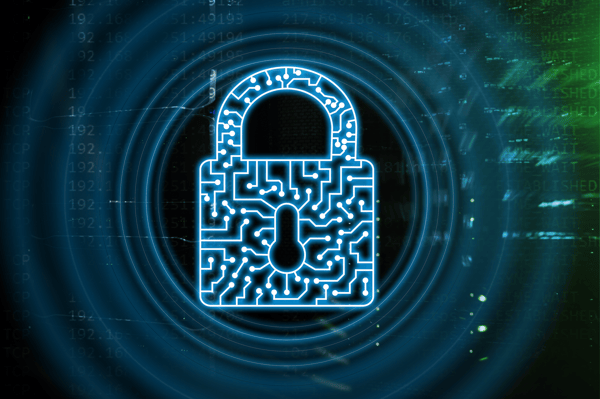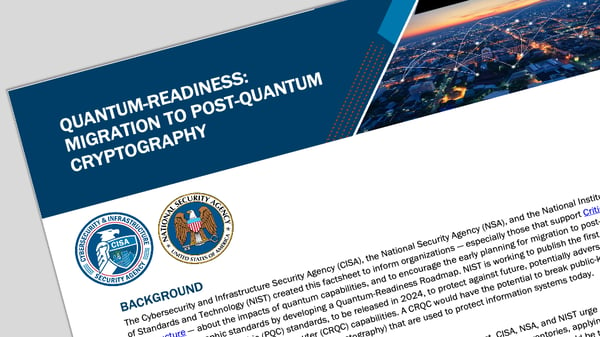Why Post-Quantum Cryptography Is Needed
The promise of quantum computing is immense, but so is the threat it poses to modern encryption. As progress accelerates, the cryptographic systems we rely on to secure everything from national security data to everyday online transactions are becoming increasingly vulnerable.
Post-quantum cryptography (PQC) is the urgent response: a new generation of algorithms designed to withstand attacks from both classical and quantum computers.
Can Quantum Computers Break Encryption?
Yes—and that’s exactly why post-quantum cryptography matters.
Most of today’s cryptographic infrastructure relies on the mathematical difficulty of certain problems that classical computers struggle to solve. Quantum computing changes the rules.
Classical Encryption at Risk
Algorithms like RSA (used for digital signatures, certificates, and key exchange), Elliptic Curve Cryptography (ECC), and Diffie-Hellman depend on the computational hardness of factoring large integers or solving discrete logarithms. These problems are considered infeasible for classical computers to solve in a reasonable time.
But with quantum computing, that’s no longer true.

The Shor’s Algorithm Breakthrough
In 1994, mathematician Peter Shor developed a quantum algorithm that could efficiently factor large integers and compute discrete logarithms, both core assumptions underlying RSA and ECC security.
On a sufficiently powerful quantum computer, Shor’s Algorithm could break RSA-2048 in hours or even minutes, rendering the most widely used public key cryptography obsolete.

Harvest Now, Decrypt Later Attacks
Even though large-scale quantum computers capable of running Shor’s Algorithm aren’t widely available yet, adversaries aren’t waiting. They’re already engaging in what’s known as Harvest Now, Decrypt Later (HNDL) attacks.
Sensitive data is being collected and stored now, while encrypted with today’s classical algorithms. Once quantum computers are viable, attackers can decrypt this archived data using quantum techniques.
If the data you protect today has value 10+ years into the future—intellectual property, state secrets, health records, financial data—it is already at risk.
How Does Post-Quantum Cryptography Work?
Post-quantum cryptography (PQC) is designed to secure our digital infrastructure against the capabilities of future quantum computers, without abandoning what already works today.
Resistant by Design
PQC algorithms are built on mathematical problems that remain hard even for quantum computers. These include:
- Lattice-based cryptography
- Hash-based signatures
- Code-based encryption
- Multivariate polynomial equations
Unlike RSA or ECC, which rely on number theory that Shor’s Algorithm can exploit, these alternative structures are believed to be quantum resistant.

Asymmetric Encryption: A Core Focus
Most PQC work focuses on replacing asymmetric encryption, which is where public key infrastructure (PKI) lives. This includes:
- Key Encapsulation Mechanisms (KEMs) - used for exchanging secure session keys (e.g., Kyber)
- Digital Signature Algorithms (DSAs) - used to verify authenticity and integrity (e.g. Dilithium, SPHINCS+)
Designed for Compatibility
One of PQC’s greatest strengths is its ability to interoperate with existing systems and protocols. PQC algorithms can be integrated into standard protocols like TLS, SSH, and VPNs, often using hybrid modes that combine classical and quantum-safe encryption for added protection and compliance.
This compatibility enables organizations to transition to post-quantum security incrementally, without the need to rip and replace existing infrastructure.
Additionally, PQC algorithms run on today’s computers. They don’t require a quantum computer to run.
The Purpose and Goals of PQC
The goal of post-quantum cryptography isn’t just to stay ahead of the quantum threat, it’s to protect the integrity of our digital world for decades to come.
Replace Vulnerable Algorithms Before It’s Too Late
Quantum computing poses a direct threat to RSA, ECC, and other widely used cryptographic standards.
Once quantum computers reach sufficient power, these algorithms will be easily broken. Post-quantum cryptography provides a proactive path to replace them before that tipping point arrives.
Preserve Confidentiality and Trust
Encryption is the foundation of trust in digital systems. From online banking to national defense, data must remain secure in transit and at rest.
PQC ensures that the confidentiality and authenticity of data are preserved, even in a post-quantum future.
Protect Long-Lived and High-Value Data
Not all data loses value over time. Trade secrets, medical records, legal agreements, and government files often have lifespans of 10, 20, or even 50+ years.
PQC is designed to protect this long-term sensitive data against “harvest now, decrypt later” attacks, where adversaries steal encrypted data now and wait to break it once quantum computers become capable.

“Experts predict quantum computers could render current encryption obsolete by 2029. The time to act is now.”
– Gartner, Preparing for the Quantum World with Crypto-Agility
NIST’s Post-Quantum Cryptography Standardization Efforts
The U.S. National Institute of Standards and Technology (NIST) has led a multi-year, global initiative to identify cryptographic algorithms that can withstand attacks from future quantum computers. This effort culminated on August 13, 2024, when NIST published the first three finalized post-quantum cryptography (PQC) standards.
Finalized PQC Algorithms
These algorithms are designed to replace classical asymmetric methods like RSA and ECC, which are vulnerable to quantum attacks:
ML-KEM (FIPS 203)
Module-Lattice Key Encapsulation Mechanism enables parties to establish shared secrets—such as symmetric encryption keys—over insecure networks in the presence of both quantum and classical computers. Designed for use in TLS/SSL, VPNs, encrypted messaging apps, and government or military communications.
ML-DSA (FIPS 204)
Module-Lattice Digital Signature Algorithm provides quantum-resistant digital signatures for verifying identity, integrity, or authenticity. It offers fast signature generation and verification with reasonable key and signature sizes for a PQC algorithm. Common use cases include secure software updates, certificate signing, email and document signing, and tamper-proof digital communication.
SLH-DSA (FIPS 205)
Stateless Hash-Based Digital Signature Algorithm is a quantum-resistant signature scheme built on proven, secure hashing algorithms that are immune to quantum attacks. Its stateless design simplifies implementation. SLH-DSA features relatively small public keys (though larger signatures), making it preferable for certain use cases compared to ML-DSA.


Enabling FIPS 140-3 Compatibility
NIST’s Cryptographic Module Validation Program (CMVP) is now incorporating these new PQC algorithms into the FIPS 140-3 validation process to support federal compliance.
This means organizations can begin integrating quantum-safe algorithms into compliant cryptographic modules, a critical step for those working in government, defense, or other regulated sectors.
Learn more about implementing PQC in FIPS 140.3 modules in our blog post here.
Key Challenges in Implementing Post-Quantum Cryptography
Migrating to post-quantum cryptography is a necessary step, but it’s not a simple one. Organizations face a number of technical, operational, and organizational hurdles along the way.
🔑 Cryptographic Asset Discovery
Before replacing vulnerable algorithms, you need to know where they live. Most organizations struggle to map where and how cryptography is used across systems, applications, and third-party services. Without a complete cryptographic inventory, prioritizing PQC migration is guesswork.
🛡️ Compatibility with Existing Infrastructure
PQC algorithms are not always plug-and-play. Legacy hardware, outdated libraries, and vendor-specific constraints can limit where and how new cryptography can be introduced. Ensuring interoperability with protocols like TLS, SSH, and VPNs, while maintaining uptime and performance, is a major challenge.
🔄 Hybrid and Transition Modes
Since not all systems will be PQC-ready at the same time, organizations should adopt hybrid cryptographic models that combine classical and quantum-safe algorithms. This adds complexity but is essential for phased migration and FIPS 140-3 compliance.
⏩ Performance Considerations
PQC algorithms often require larger key sizes and greater computational resources, which can impact performance, especially in constrained environments like mobile or embedded systems. On the other hand, performance testing has shown some of the new PQC algorithms are faster than some classical algorithms. Understanding performance implications and balancing security with speed and efficiency remains a key consideration.
🔒 Talent and Implementation Complexity
Quantum-safe cryptography requires specialized knowledge and careful implementation. Few teams have in-house experts to properly deploy and test new algorithms, and mistakes can introduce vulnerabilities. Secure implementation demands both deep cryptographic understanding and rigorous engineering discipline.
Is Your Organization Ready for PQC?
Successfully transitioning to post-quantum cryptography starts with understanding your cryptographic landscape, challenges, and priorities. But where do you begin?
Preparing for PQC Migration
 Post-quantum cryptography migration is more than a technical upgrade; it’s a strategic transformation. Organizations that prepare early can reduce risk, maintain compliance, and avoid costly last-minute changes.
Post-quantum cryptography migration is more than a technical upgrade; it’s a strategic transformation. Organizations that prepare early can reduce risk, maintain compliance, and avoid costly last-minute changes.
Assess Your Cryptographic Systems
Begin with a thorough audit of how and where cryptography is used across your organization. This includes:
- Protocols (e.g., TLS, VPN, SSH)
- Software libraries
- Hardware modules
- Third-party integrations and dependencies
You can’t protect what you can’t see. Cryptographic asset discovery is step one.
Build a Migration Plan
Once you know what’s in place, define a roadmap based on risk, sensitivity, and feasibility.
Key steps include:
- Inventory: Catalog all cryptographic assets
- Prioritization: Focus on systems with long-term data or regulatory exposure
- Ecosystem Readiness: Ensure your vendors and partners are preparing for PQC, too
This phased approach helps avoid disruption while aligning teams around clear priorities.
Embrace Crypto-Agility and Hybrid Models
A successful migration depends on crypto-agility, the ability to switch algorithms without overhauling applications or infrastructure. SafeLogic’s architecture enables this by allowing organizations to update cryptographic algorithms on the fly.
Hybrid modules also play a critical role, combining classical and quantum-safe encryption to:
- Maintain backward compatibility
- Ensure compliance during the transition
- Strengthen defenses with layered protection
Align with FIPS 140-3
Organizations operating in regulated industries or government supply chains should ensure that new cryptographic implementations are FIPS 140-3 compatible.
With NIST’s PQC algorithms now eligible for FIPS validation, it’s essential to work with vendors like SafeLogic that provide commercial grade, validated cryptographic modules.
An Agile Roadmap to Post-Quantum Readiness
Preparing for PQC is a journey, not a one-time fix. SafeLogic’s PQC Migration Roadmap gives you the actionable strategy to start strong and stay agile as standards evolve.
Post-Quantum Cryptography Support in CryptoComply v3.5
CryptoComply v3.5 is the latest evolution of our flagship cryptographic software—engineered for post-quantum readiness, real-world deployment, and future compliance. It enables organizations to prepare for PQC migration without rewriting your stack.
With drop-in compatibility for OpenSSL 3.5, CryptoComply v3.5 delivers exceptional performance improvements, full support for NIST-standardized PQC algorithms, hybrid cryptography for FIPS environments, and modern transport layer support via QUIC.
What's new in v3.5:
Post Quantum Cryptography Support
Includes all three NIST-standard algorithms:
- ML-KEM (FIPS 203) - Key encapsulation
- ML-DSA (FIPS 204) - Lattice-based digital signatures
- SLH-DSA (FIPS 205) - Hash-based signatures with side-channel resistance
Hybrid PQC + FIPS Mode
Combine ML-KEM with SafeLogic's validated FIPS 140-3 algorithms for quantum-resistant encryption today while staying fully compliant.
OpenSSL 3.5 Performance Boost
Binary-compatible with OpenSSL 3.5, delivering up to 88% faster performance for certain cryptographic operations.
QUIC Protocol Support
Full server-side support for QUIC—ideal for mobile apps, IoT, and modern web services using TLS 1.3.
Optional ESV-Certified Entropy Source
Future-proof your compliance with SafeLogic's standalone entropy provider, designed to meet NIAP and upcoming 2026 NIST FIPS 140-3 requirements.
CryptoComply v3.5 runs on desktops, servers, mobile devices, embedded systems, containers, and cloud environments, with support for Windows, Linux, macOS, Android, iOS, and more.
Explore CryptoComply v3.5SafeLogic’s Leadership in PQC Migration
SafeLogic isn’t just adapting to the post-quantum era. We’re leading the way.
National Collaboration at the Forefront
We’re an active participant in the NIST National Cybersecurity Center of Excellence (NCCoE) PQC Migration Project, working alongside industry leaders like:
- Microsoft
- Cisco
- IBM
Together, we’re developing real-world strategies and reference architectures to help organizations transition to quantum-resistant encryption.
Driving Strategy at the Highest Levels
SafeLogic CEO Evgeny Gervis leads the Risk Management and Prioritization Workstream for the NCCoE project and has contributed to federal efforts shaping the nation’s quantum migration roadmap—including participation in a White House conference with the Federal CIO and CISO.
By actively shaping the standards, tools, and timelines for PQC readiness, SafeLogic ensures our customers are aligned with the most up-to-date guidance and best practices.

Ready to Take the First Step Toward Quantum Resistance?
Call us at 844-436-2797 or complete the form below to talk to a cryptography expert.
To Proxy or Not to Proxy
September 24, 2025 • Alex Zaslavsky
Comparing PQC and Classical Algorithms
June 13, 2025 • Aryeh Archer
The Future is NOW
May 13, 2025 • Evgeny Gervis
Post-Quantum Cryptography Algorithms: NIST Selects HQC
March 14, 2025 • Alex Zaslavsky
2024 Year in Review - SafeLogic Cryptography Experts
January 8, 2025 • Evgeny Gervis
Quantum Resilience – An Idea Whose Time Has Come
December 26, 2024 • Evgeny Gervis
CryptoComply PQ TLS Early Access Program
December 19, 2024 • Mike Donaldson















